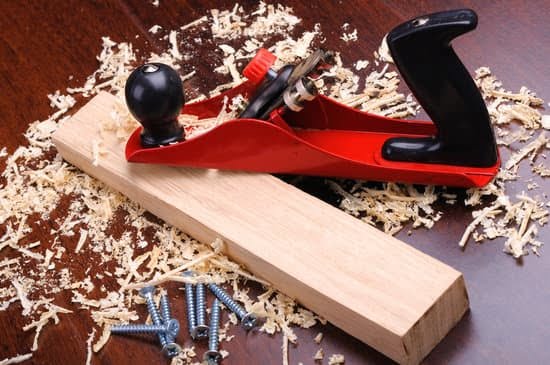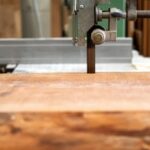Are you a woodworking enthusiast looking to improve the quality of your projects? Then you’ve come to the right place. In this article, we will explore the essential skill of finding accurate angles in woodworking and how it can significantly impact the overall quality of your projects. Whether you’re a beginner or an experienced woodworker, mastering the art of measuring and cutting precise angles is crucial for achieving professional-looking results.
Woodworking is a craft that demands precision, and accurate angles are fundamental to its success. From creating seamless joints to achieving perfect mitered corners, understanding how to find and work with angles is essential for any woodworking project. In this article, we will delve into the basics of angles and their measurement in woodworking, as well as explore various tools and techniques for accurately finding and applying angles in your projects.
As we journey through this exploration, we will also provide valuable tips for achieving accuracy in angle measurements, highlight common mistakes to avoid when working with angles, and discuss how to apply this knowledge to specific woodworking projects. So whether you’re building furniture, crafting intricate designs, or simply honing your woodworking skills, mastering the art of finding angles will undoubtedly elevate the quality of your work.
Let’s dive in and discover how you can take your woodworking projects to the next level.
Understanding Angles
Basic Principles of Angles
In woodworking, understanding angles is crucial for creating precise and accurate cuts and joints. An angle is formed by two intersecting lines, and it is measured in degrees. The most common angles used in woodworking are 90 degrees (right angle), 45 degrees (miter cut), and various other angles depending on the specific project requirements.
Measuring Angles in Woodworking
To accurately measure angles in woodworking, woodworkers use specialized tools such as protractors, bevel gauges, and angle finders. These tools allow for precise measurements and ensure that the desired angles are achieved when making cuts or assembling pieces.
How to Find Angles in Woodworking
When it comes to finding angles in woodworking, it’s essential to understand the specific measurement required for the project at hand. Whether it’s a simple 90-degree cut for a box joint or a more complex compound angle for a beveled edge, woodworkers must be able to accurately measure and replicate these angles to ensure a professional-quality result.
By mastering the basic principles of angles and learning how to effectively measure them using the right tools, woodworkers can elevate the quality of their projects and take their craftsmanship to the next level. Understanding angles is not only fundamental to woodworking but also opens up possibilities for creating intricate designs and impeccable joinery.
Tools for Measuring Angles
When it comes to woodworking, accuracy is key, especially when it comes to measuring and cutting angles. The right tools for measuring angles in woodworking can make a significant difference in the overall quality of your project. There are several different tools available for accurately measuring angles in woodworking, such as protractors, bevel gauges, and angle finders.
Protractors are one of the most common tools used for measuring angles in woodworking. They typically have a semicircular shape with degree markings around the edge, allowing woodworkers to precisely measure and mark specific angles on their workpieces. Bevel gauges, on the other hand, are designed to easily transfer or replicate an angle from one surface to another.
They consist of a straight edge and an adjustable arm that can be locked at various angles. This makes them ideal for setting up equipment like table saws and band saws at specific angles.
Angle finders are another essential tool for accurately measuring angles in woodworking. These devices can measure both inside and outside angles and often come with digital displays for precise readings. Some models even have the ability to calculate complementary angles, making them versatile additions to any woodworker’s toolkit.
Understanding how to use these tools effectively is crucial for achieving precise and accurate angles in woodworking projects. By mastering the use of protractors, bevel gauges, and angle finders, woodworkers can ensure that their cuts and joints are made at the correct angles, ultimately leading to higher-quality finished products. So understanding how to find angles woodworking using these different tools can greatly improve the overall craftsmanship of your workpieces.
By utilizing the right tools and techniques for measuring angles in woodworking projects, woodworkers can take their skills to a new level and enhance the quality of their finished products. So next time you embark on a woodworking project that requires precise angle measurements, consider exploring these different tools and incorporating them into your workflow for improved accuracy and overall craftsmanship.
Techniques for Finding Angles
Using a Miter Box
One of the traditional and reliable methods for finding angles in woodworking is by using a miter box. This tool consists of a box with slots for guiding a hand saw at various angles. By placing the wood piece in the miter box and aligning it with the appropriate slot, woodworkers can easily make precise angled cuts. Miter boxes are especially useful for making accurate 45-degree angle cuts for perfect mitered corners.
Utilizing a Sliding Bevel
Another effective technique for finding angles in woodworking is using a sliding bevel, also known as a bevel gauge. This simple yet versatile tool allows woodworkers to determine and transfer angles directly from one piece to another. By adjusting the blade to the desired angle and locking it in place, woodworkers can then transfer that specific angle to their workpiece, ensuring accuracy and consistency throughout their project.
Implementing a Digital Angle Gauge
For those who prefer modern technology, a digital angle gauge is an excellent option for finding angles in woodworking. This handheld device provides precise measurements of both inside and outside angles, allowing woodworkers to identify exact measurements with ease. Digital angle gauges are particularly useful for complex projects that require highly accurate angles, as they eliminate any guesswork and ensure precision in every cut.
By mastering these different techniques for finding angles in woodworking, including using a miter box, sliding bevel, and digital angle gauge, woodworkers can elevate the quality of their projects and achieve greater accuracy in their angled cuts. Whether opting for traditional methods or embracing modern tools, understanding how to find angles woodworking is essential for achieving professional results in any woodworking endeavor.
Tips for Accuracy
Woodworking requires precision and accuracy, especially when it comes to finding and cutting angles. Whether you are working on a simple project or a complex piece of furniture, understanding how to find angles in woodworking is crucial for the overall quality of the finished product. In this section, we will explore some valuable tips and tricks for achieving precise and accurate angles in woodworking.
One essential tool for accurately finding angles in woodworking is a sharp pencil. When marking angles on wood, using a sharp pencil ensures that you create clear and precise lines that are easy to follow when making cuts. Additionally, having a dedicated angle-cutting station can greatly improve accuracy.
This can be as simple as creating a designated area in your workshop where you can set up tools like miter saws, table saws, or bandsaws specifically for cutting angles. Having a consistent setup for angle cuts reduces the margin for error and allows for more precise measurements.
Another useful technique for achieving accurate angles in woodworking is using a stop block. A stop block is a block of wood or other material that can be clamped onto a workpiece to serve as a guide for making repetitive cuts at the same angle.
This is particularly helpful when working on projects that require multiple pieces cut at identical angles. Using a stop block helps ensure uniformity across all pieces, contributing to the overall quality and appearance of the finished product.
When working with wood, attention to detail is key, especially when it comes to achieving precise and accurate angles. By incorporating these tips and tricks into your woodworking practices, you can significantly improve your ability to find and cut angles with accuracy.
| Tip | Description |
|---|---|
| Sharp Pencil | Using a sharp pencil ensures clear and precise lines when marking angles on wood. |
| Dedicated Angle-Cutting Station | Setting up designated area with tools specifically for cutting angles reduces margin for error. |
| Stop Block | A stop block serves as guide for making repetitive cuts at same angle, ensuring uniformity. |
Common Mistakes to Avoid
When it comes to woodworking, finding accurate angles is crucial for the overall quality and precision of the project. However, there are common mistakes that woodworkers often make when measuring and cutting angles, which can lead to costly errors. It is important to be aware of these pitfalls and how to avoid them in order to achieve precise and professional results in woodworking projects.
To prevent costly errors when finding angles in woodworking, consider the following common mistakes and how to avoid them:
1. Inaccurate measurements: One of the most common mistakes woodworkers make when finding angles is taking inaccurate measurements. This can happen if the tools used for measuring angles are not properly calibrated or if they are not held securely in place. To avoid this mistake, always double-check measurements using multiple tools such as protractors, bevel gauges, or angle finders to ensure accuracy.
2. Improper tool usage: Using the wrong tool or using a tool incorrectly can result in inaccurate angle measurements. For example, using a dull pencil for marking cuts can lead to imprecise lines and incorrect cuts. To avoid this mistake, always use sharp pencils or marking knives for accurate marking, and learn how to properly use tools such as miter boxes, sliding bevels, and digital angle gauges for precise angle measurements.
3. Lack of attention to detail: Another common mistake is failing to pay attention to small details that can affect angle measurements, such as ensuring that workpieces are securely clamped in place before cutting angles. To prevent this mistake, take the time to double-check all setup procedures before making any cuts and use stop blocks or dedicated angle-cutting stations for consistent and precise results.
By being aware of these common mistakes and taking the necessary precautions, woodworkers can avoid costly errors when finding angles in woodworking projects. This will ultimately lead to more accurate and professional results in their craft.
Applying Angles in Woodworking Projects
When it comes to woodworking projects, understanding how to find and apply angles is crucial for achieving precision and accuracy. Whether you’re working on mitered corners, angled cuts, or joinery, the ability to measure and cut angles correctly will greatly impact the quality of your finished piece. In this section, we will explore how to apply the knowledge of finding angles to specific woodworking projects.
Mitered corners are a common technique used in woodworking to create seamless and polished joints. When working with mitered corners, it’s essential to accurately measure and cut the angles of each piece to ensure a perfect fit. Using a miter saw or miter box along with a protractor or digital angle gauge can help you achieve precise angles for flawless mitered corners.
In addition to mitered corners, angled cuts are often used in various woodworking projects such as picture frames, decorative trim, or furniture legs. To make accurate angled cuts, it’s important to use the right tools and techniques for measuring the angles. A sliding bevel or bevel gauge can be used to transfer and replicate precise angles on your workpiece, ensuring that your angled cuts are clean and precise.
Joinery is another area where the knowledge of finding angles is essential. Whether you’re creating dovetail joints, mortise and tenon joints, or other types of joinery, understanding how to measure and cut angles accurately is crucial for strong and durable connections. Using specialized tools like angle finders or adjustable bevels can assist in achieving the perfect angle for your specific joinery technique.
Overall, applying the knowledge of finding angles to specific woodworking projects requires patience, attention to detail, and the right tools. By mastering this skill, woodworkers can elevate the quality of their work and produce professional-looking pieces with perfect angles every time.
Conclusion
In conclusion, mastering the skill of finding angles in woodworking is crucial for achieving precision and accuracy in projects. The ability to measure and cut angles accurately can significantly impact the overall quality of the finished piece, whether it’s a simple picture frame or a complex piece of furniture. Understanding the basics of angles and having the right tools and techniques at your disposal is essential for any woodworker striving for excellence in their craft.
By following the tips and techniques provided in this article, woodworkers can improve their skills in finding and measuring angles. Using tools such as protractors, bevel gauges, and angle finders can help ensure that angles are measured with precision. Techniques like utilizing miter boxes, sliding bevels, and digital angle gauges can also aid in achieving accurate angle cuts.
Applying the knowledge gained from this article to specific woodworking projects, such as mitered corners, angled cuts, and joinery, will not only enhance the quality of work but also expand creative possibilities. Avoiding common mistakes and adopting best practices will ultimately lead to more efficient and successful woodworking endeavors. Overall, mastering the skill of finding angles is a fundamental aspect of woodworking that every enthusiast should prioritize honing for improved craftsmanship.
Frequently Asked Questions
How Do You Measure Angles in Woodwork?
In woodwork, angles are typically measured using a protractor or a bevel gauge. A protractor is a semi-circular tool with degree markings that can be aligned along the edge of the wood to measure the angle.
A bevel gauge, on the other hand, can be set to a specific angle and then used to transfer that measurement onto the wood for cutting or other purposes.
How to Calculate Angles?
Calculating angles can be done using trigonometric functions such as sine, cosine, and tangent. These functions relate the lengths of the sides of a right-angled triangle to the measure of its angles. Additionally, there are also online calculators and mobile apps available that can help with angle calculations for those who may not be comfortable using trigonometric functions.
How Do I Find an Angle With a Speed Square?
To find an angle with a speed square, place the lip of the square against the edge of the board and pivot it until you align it to your desired angle marking on the square’s body. Once aligned, hold the square in place and use it as a guide for marking or cutting your angle on the wood.
This method is particularly useful for quickly and accurately measuring and marking common angles used in woodworking projects.

Hi everyone! I’m a woodworker and blogger, and this is my woodworking blog. In my blog, I share tips and tricks for woodworkers of all skill levels, as well as project ideas that you can try yourself.





